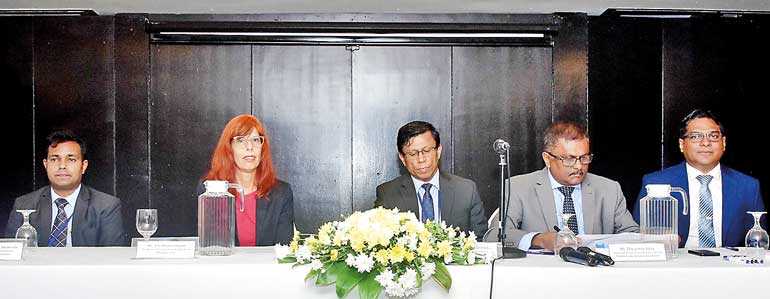Saturday Mar 29, 2025
Saturday Mar 29, 2025
Thursday, 12 September 2019 01:10 - - {{hitsCtrl.values.hits}}

Lack of transparency and predictability are key barriers to trade. Entrepreneurs often report that information on trade formalities are not adequately published and disseminated. This is further to reports that regulations or procedures are changed without due notice, thus impacting their ability to comply with updated requirements.
Within the framework of the EU-Sri Lanka Trade-Related Assistance project, and the GIZ project on enhancing the step-by-step procedures functionality, the Geneva-based International Trade Centre (ITC) is assisting the Government of Sri Lanka to comply with one of the transparency provisions of the World Trade Organisation (WTO) Trade Facilitation Agreement (TFA) – Article 1.2 (information available on internet, including practical steps needed for importation exportation, and transit, trade-related forms and documents).
The EU-Sri Lanka Trade-Related Assistance project is funded by the European Union (EU) and is implemented by ITC and UNIDO, where ITC is the lead implementing agency.
ITC’s technical assistance focuses on the development of step-by-step guides to trade formalities. Specific support is provided to the Department of Commerce (DoC) to develop a step-by-step procedures functionality – detailing step-by-step product-specific export and import procedures in Sri Lanka – to be eventually integrated in the Sri Lanka Trade Information Portal (TIP).
With a view to disseminate to the public the work carried out so far, ITC and DoC – with the support of the EU and GIZ, organised an awareness-raising event on the step-by-step functionality on 5 September, well attended by over 50 participants from the public and private sector. This event took place at the Cinnamon Grand.
In addition to raising awareness on the step-by-step functionality, the event sought to showcase to public and private stakeholders the work undertaken to consolidate the information in the functionality, including the mapping of relevant trade procedures with key border agencies, and uploading the information onto the step-by-step functionality online. Highlighting the intended benefits for the private sector in using the information provided in the step-by-step functionality, discussing the next steps, and gathering feedback of the stakeholders on how to improve the functionality were also addressed at the event.
The multiple benefits of the functionality were also highlighted, as they provide consolidated information on trade formalities in a sequential order in a single map – differentiating between export and import procedures – thus providing predictability to the entire export/import process and contributing to leverage time and cost savings for traders.
Dinesh de Silva from the Ceylon Chamber of Commerce who participated at the event stated: “The step-by-step functionality which has been initiated by ITC will no doubt make the use of the TIP extremely user friendly and will increase the usage tremendously. This new approach appears to be unique in terms of being product-specific, which will further encourage the Sri Lankan SMEs to participate more in the international trade and contribute to the development of Sri Lanka’s GDP growth.”
In the last session, participants were encouraged to share their comments and feedback in an engaging discussion on how to further improve and enhance this online functionality to maximise the experience of users in Sri Lanka. On a conclusive note, DoC and ITC called border agencies and relevant stakeholders, including trade chambers, to strengthen their support on the work undertaken and provide the necessary information to upload in the step-by-step functionality.
Discover Kapruka, the leading online shopping platform in Sri Lanka, where you can conveniently send Gifts and Flowers to your loved ones for any event including Valentine ’s Day. Explore a wide range of popular Shopping Categories on Kapruka, including Toys, Groceries, Electronics, Birthday Cakes, Fruits, Chocolates, Flower Bouquets, Clothing, Watches, Lingerie, Gift Sets and Jewellery. Also if you’re interested in selling with Kapruka, Partner Central by Kapruka is the best solution to start with. Moreover, through Kapruka Global Shop, you can also enjoy the convenience of purchasing products from renowned platforms like Amazon and eBay and have them delivered to Sri Lanka.
Discover Kapruka, the leading online shopping platform in Sri Lanka, where you can conveniently send Gifts and Flowers to your loved ones for any event including Valentine ’s Day. Explore a wide range of popular Shopping Categories on Kapruka, including Toys, Groceries, Electronics, Birthday Cakes, Fruits, Chocolates, Flower Bouquets, Clothing, Watches, Lingerie, Gift Sets and Jewellery. Also if you’re interested in selling with Kapruka, Partner Central by Kapruka is the best solution to start with. Moreover, through Kapruka Global Shop, you can also enjoy the convenience of purchasing products from renowned platforms like Amazon and eBay and have them delivered to Sri Lanka.